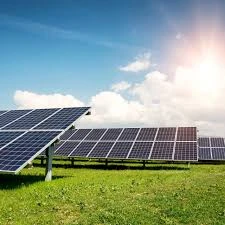solar panel conversion efficiency
The Importance of Solar Panel Conversion Efficiency
As the world shifts towards renewable energy sources, solar power has emerged as a leading contender in reducing our carbon footprint. Central to the effectiveness of solar energy systems is the concept of conversion efficiency. This metric measures how effectively a solar panel converts sunlight into usable electricity. Understanding and improving solar panel conversion efficiency is crucial for maximizing energy output, reducing costs, and promoting the widespread adoption of solar technology.
What is Solar Panel Conversion Efficiency?
Solar panel conversion efficiency refers to the percentage of solar energy that is converted into electrical energy by a solar panel. For example, if a solar panel has an efficiency of 20%, it means that 20% of the sunlight hitting the panel is converted into electricity, while the remaining 80% is lost as heat or reflected back into the environment. This efficiency is influenced by various factors, including the type of solar cells used, the quality of the materials, and environmental conditions such as temperature and shading.
Types of Solar Cells and Their Efficiencies
Several types of solar cells are used in solar panels, each with varying efficiency rates. The most common types include
1. Monocrystalline Solar Cells These cells are made from a single crystal structure, allowing for greater efficiency rates, typically between 15% and 22%. They are known for their sleek appearance and space efficiency.
2. Polycrystalline Solar Cells Made from multiple crystal structures, these cells are generally less expensive to produce but have lower efficiency, typically around 13% to 16%. They are identifiable by their bluish hue and are widely used in residential applications.
3. Thin-Film Solar Cells These cells are made by depositing a thin layer of photovoltaic material onto a substrate. They are less efficient, with conversion rates usually between 10% to 12%, but they are lightweight, flexible, and can be integrated into various surfaces.
solar panel conversion efficiency

4. Bifacial Solar Cells These innovative panels can capture sunlight on both sides, potentially increasing total energy output. They can achieve higher efficiencies than traditional monofacial panels, making them an attractive option for maximizing sunlight capture.
The Role of Technology in Enhancing Efficiency
Recent technological advancements have significantly improved the conversion efficiency of solar panels. For instance, the development of multi-junction solar cells, which layer multiple materials that each absorb different wavelengths of sunlight, has pushed efficiencies well above 40% in laboratory settings. These breakthroughs, while still costly and in the experimental phase for large-scale production, represent the future of solar technology.
Additionally, innovations in tracking systems—mechanical devices that adjust the panel's position to follow the sun—can also enhance energy capture. By optimizing the angle of the solar panels, these systems can increase energy production by 25-50%, proving that efficiency is not solely dependent on the panels themselves.
Environmental Considerations
While improving conversion efficiency is essential, it is equally important to consider the environmental impact of solar panel production. The extraction of raw materials, manufacturing processes, and end-of-life disposal can all contribute to a solar panel's overall carbon footprint. Thus, the development of sustainable manufacturing practices and recycling methods is crucial. Efforts are underway to create more environmentally friendly panels and to ensure that end-of-life solar systems can be recycled or disposed of responsibly.
Conclusion
Solar panel conversion efficiency is a critical factor that influences the viability and attractiveness of solar energy as a renewable energy source. As technology continues to advance, we can expect to see further improvements in efficiency, making solar energy a more competitive and sustainable option for electricity generation. Understanding the nuances of efficiency not only helps consumers make informed decisions but also encourages ongoing innovation in the renewable energy sector. Ultimately, the push for higher efficient solar panels is a step toward a cleaner, more sustainable future for all.
-
Unlocking Energy Freedom with the Off Grid Solar InverterNewsJun.06,2025
-
Unlock More Solar Power with a High-Efficiency Bifacial Solar PanelNewsJun.06,2025
-
Power Your Future with High-Efficiency Monocrystalline Solar PanelsNewsJun.06,2025
-
Next-Gen Solar Power Starts with Micro Solar InvertersNewsJun.06,2025
-
Harnessing Peak Efficiency with the On Grid Solar InverterNewsJun.06,2025
-
Discover Unmatched Efficiency with the Latest String Solar InverterNewsJun.06,2025







